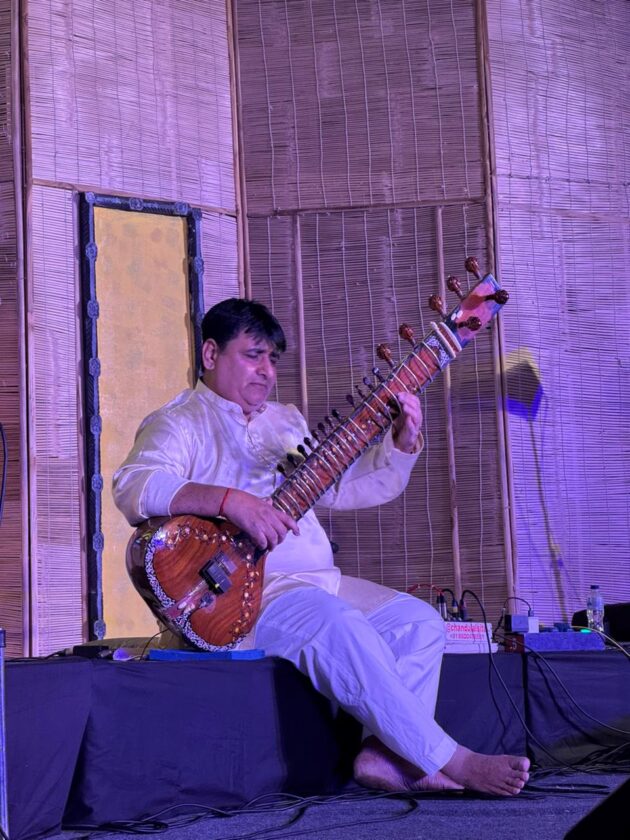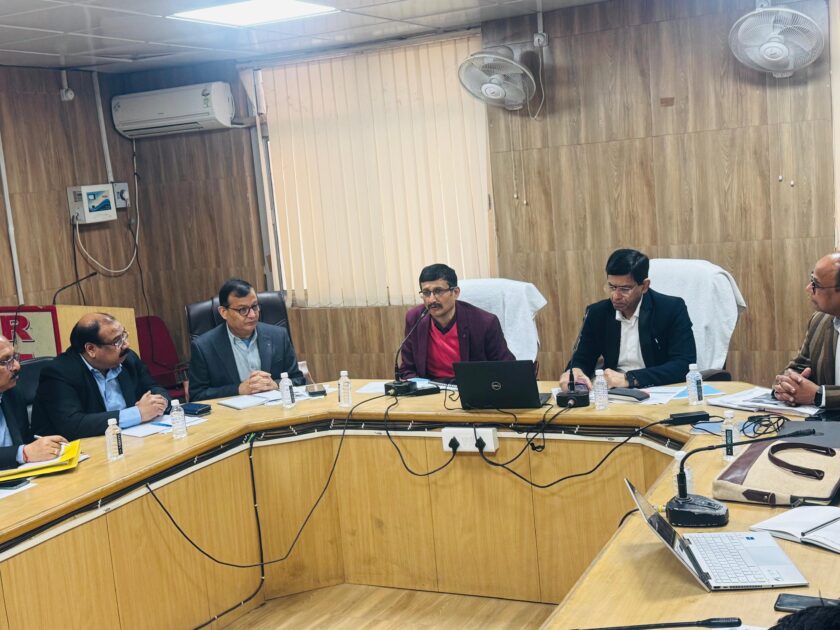By Arijit Bose
New Delhi: In the dusty maidans of pre-independence India, barefoot boys chased a cork ball with curved sticks, dreaming of Olympic glory. A hundred years later, those dreams still flicker—though the fields are now astroturf, the sticks carbon-fibre, and the dreams tempered by heartbreak and resurgence. From 1925, when the Indian Hockey Federation (IHF) was formed, to the bronze medal in Paris 2024, Indian hockey has scripted one of the most dramatic sagas in world sport: eight Olympic golds, one silver, three bronzes; periods of absolute dominance followed by decades of decline, and now, a stubborn renaissance.
The Golden Dawn (1928–1956)
The story truly begins in Amsterdam, 1928. A young team led by the legendary Dhyan Chand arrived at the Olympics almost as an afterthought. Britain, the dominant force, had boycotted the tournament in protest against India’s inclusion. India thrashed everyone else. In the final against the Netherlands, Dhyan Chand scored three as India won 3–0. The wizard from Jhansi had announced himself.
What followed was an imperial humiliation of the imperialists. Between 1928 and 1956, India played six Olympic finals and won them all, scoring 197 goals and conceding just eight. The 1932 Los Angeles Games saw India play only one match—the final—beating the USA 24–1, still an Olympic record. Dhyan Chand’s brother Roop Singh scored 13 in that tournament.
Then came Berlin, 1936, under the gaze of Adolf Hitler. India beat Germany 8–1 in the final; legend has it that the Führer offered Dhyan Chand a field marshal’s rank if he switched allegiance. He refused.
The numbers from this era are staggering. Dhyan Chand scored over 1,000 goals in his career, including 14 in the 1936 Olympics. Balbir Singh Sr scored five in the 1948 final against Britain—India’s first as an independent nation. Every triumph was more than sport—it was a declaration of identity. When colonial subjects were expected to bow, Indian hockey players toured the world—Australia, New Zealand, Europe, East Africa—winning almost everything. Between 1926 and 1960, India played 241 international matches, winning 186, drawing 33, and losing only 22.
The Astroturf Shock (1960–1980)
The spell broke in Rome, 1960. Pakistan, coached by the Germans, arrived with new techniques and better equipment—synthetic studs and faster gameplay. India, still rooted in old methods and smooth-soled shoes, couldn’t adapt quickly enough. Pakistan won 1–0 in the final, ending India’s unbroken run of golds.
The 1960s and 1970s were years of drift. Administrative chaos and internal factionalism divided the IHF. Coaching remained dated; selection was riddled with politics. Still, flashes of brilliance remained—silver in Tokyo 1964, bronze in Mexico 1968 and Munich 1972—but the world had moved on. Europe professionalised; Australia and the Netherlands built academies. India still relied on raw talent and last-minute training camps.
The nadir came in Montreal 1976, when India finished seventh. For the first time since 1928, no Olympic medal. Newspapers ran black borders; commentators spoke of “the death of Indian hockey.”
The Moscow Miracle (1980)
Then came a flicker of redemption. The 1980 Moscow Olympics, boycotted by many Western nations, gave India a rare chance. A team of virtual unknowns, captained by Vasudevan Baskaran, played fearless hockey. The final against Spain was a thriller—India won 4–3, with goals from Surinder Singh Sodhi and Mohammed Shahid.
Shahid, the dribbler from Varanasi, became folklore—his turns so sharp defenders fell over themselves. That gold, however, was a lone bright spot. It bought time, but not reform. The 1980s saw administrative confusion, court battles between federations, and players training without proper kits or pay.
Still, fans held on to nostalgia—the golden ghosts of Dhyan Chand and Balbir Singh lingering over the astroturf.
The Long Winter (1984–2008)
From Los Angeles 1984 to Beijing 2008, India failed to win a single Olympic medal—a 24-year drought. The reasons were structural: no professional domestic league, no corporate sponsorship, no grassroots development.
Icons like Dhanraj Pillay, with his explosive runs and fiery temper, tried to keep the flame alive. He played four Olympics, won Asia Cups, and led from the front, but the system never matched his passion. Between 1990 and 2002, India changed 17 coaches in 12 years. The IHF was suspended by the International Hockey Federation (FIH) for mismanagement in 2000. Players protested unpaid dues and poor facilities.
Television turned away. Cricket had taken over.
Yet, amidst this gloom, individual brilliance glimmered—Pargat Singh’s defensive steel, Jugraj Singh’s drag-flicks, and the artistry of Mukesh Kumar. And in women’s hockey, seeds were being sown. The 2002 Commonwealth Games gold in Manchester by the women’s team, led by Suraj Lata Devi, was a quiet revolution.
The League That Changed Everything (2013–Present)
In 2013, Indian hockey’s heartbeat changed rhythm. The Hockey India League (HIL) was launched—franchise-based, televised, professional. Suddenly, young Indian players shared dressing rooms with global greats like Jamie Dwyer, Teun de Nooijer, and Moritz Fürste.
Salaries soared—from ₹20,000 a month to ₹50 lakh for six weeks. More importantly, the mindset shifted. Players trained scientifically, embraced nutrition, fitness, and analytics.
The results were swift and spectacular. The junior team won the 2016 Junior World Cup at home, defeating Belgium in the final. The senior men’s team reached the Champions Trophy finals in 2016 and 2018. Then came the moment that defined a generation—Tokyo 2020 (played in 2021).

Coached by Graham Reid and led by Manpreet Singh, India beat Germany 5–4 in the bronze medal playoff, ending a 41-year Olympic medal drought. Tears flowed freely. The spirit of Dhyan Chand smiled again.
The women, under Sjoerd Marijne, finished fourth in Tokyo—their best-ever Olympic result. Their quarter-final victory over Australia stunned the hockey world.
In Paris 2024, the men repeated their bronze, beating Australia in a dramatic shootout. Captain Harmanpreet Singh, now one of the best drag-flickers globally, stood tall as the new face of Indian hockey.
The Women’s Rise
If the men’s story is about fallen giants rising again, the women’s is about builders creating from nothing. Until the 1990s, most women players came from tribal belts of Jharkhand, Odisha, and Manipur, often playing barefoot, with borrowed sticks.
The 2004 team qualified for Athens Olympics after 24 years; they lost all five matches but scored four goals—a moral victory.
Progress was slow but steady: fourth at the 2013 Junior World Cup, silver at the 2018 Commonwealth Games, and fourth in Tokyo 2020. The Paris 2024 campaign ended in ninth place, but it produced new stars—like 18-year-old Beauty Dungdung, whose fearless play embodies the sport’s future.
Today, over 1,500 girls train at 27 Hockey India academies. Odisha’s investment in women’s hockey infrastructure has been transformative. The upcoming 2025 Women’s Junior World Cup in China is seen as the next proving ground for India’s future champions.
The Dhyan Chand Legacy
No narrative of Indian hockey is complete without Major Dhyan Chand—the man whose stick seemed touched by magic. Born in 1905 in Allahabad, he joined the army at 16 and discovered hockey almost by accident. His ball control was so extraordinary that Australian newspapers once wrote, “The ball obeys Dhyan Chand.”
Once, in a tour match, officials even broke his stick to check for glue—it was just pure skill.
Today, the Khel Ratna Award, India’s highest sporting honour, bears his name. The National Stadium in New Delhi too stands as a tribute. Yet Dhyan Chand remained humble. When once offered the Bharat Ratna, he reportedly said, “Give it to someone who needs it.”
His legacy is more than medals—it’s the eternal belief that hockey, at its best, is artistry in motion.
The Road to 2028 and Beyond
As Indian hockey turns 100, the numbers inspire hope. Over 1.5 lakh children now play in Hockey India’s grassroots programmes. The Hockey India League is being revived (2024–25) with six men’s and four women’s teams. Corporate sponsors—from JSW to Odisha Mining—are pouring money into training, analytics, and physiotherapy.
Odisha, the sport’s spiritual home, has built 19 new astroturf stadiums, including the world-class facilities at Rourkela and Bhubaneswar.
The target is Los Angeles 2028. The men aim to end a 48-year gold drought; the women seek their first Olympic medal. Both teams are ranked inside the world’s top five—a position unthinkable two decades ago.
A century ago, colonised men picked up sticks and humbled empires. Today, their successors battle not colonialism but complacency, politics, and the lure of nostalgia. The sticks are lighter, the pitches faster, but the spirit remains unchanged: play for the crest, play for pride, play for that barefoot boy on a dusty maidan watching with wonder.
As India embarks on its second century of hockey, the goal is no longer just to win golds. It is to never again let the flame flicker out—to keep alive the rhythm of sticks on turf, the echo of a nation’s heartbeat in blue.
Because a hundred years on, the dream remains the same—
to chase glory with stick and spirit.





